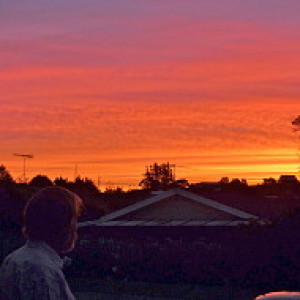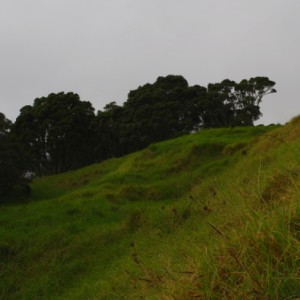Football in a volcanic crater
This is the westernmost volcano in the Auckland field. Its best known Maori name is Owairaka ("the dwelling place of Wairaka"), but Tainui sources give two names; Te Wai inu roa o Raka ("the drinking waters of Rakataura") and the name given primacy by the authors of Volcanoes of Auckland, Te Ahi ka roa a Raka which translates as “the long burning fire of Rakataura”. Rakataura was the leading Tohunga on the Tainui canoe.
Owairaka has been substantially altered by quarrying which began in the early colonisation of New Zealand. The top of the scoria cone was removed during the sixty years a ballast pit operated (from 1867 to 1928), lowering the height from 148 m to 135 m. An 1845 watercolour of Owairaka shows a magnificent cone with terracing very obvious. Less than half the original cone and its surrounds remains, and sadly most of the Maori terraces have disappeared. Between 1860 and 1959 about 1.5 million cubic metres of scoria were removed.
Maori had extensively modified Owairaka in pre-colonisation days, constructing terraces, pits, ditches and banks in making a defensive pa. The remnants of a few of the terraces are visible in the extra photo for today.
The original tuff ring resulting from the first wet explosions, was buried by the large complex scoria cone which was thrown up during the fire fountaining eruptions which followed. There were two craters; a large breached crater opening to the northwest, and a smaller crater on the mound to the south.
The floor of the larger crater was levelled to form the football field shown in today’s photo. Behind the southern goal the side of the crater extends upwards to the trig station atop the much altered (in shape as well as height) cone. This was an area of extensive Maori terracing and ditches, much altered by quarrying and tree planting post colonisation.
The floor of the ballast pit was also levelled, and is now used for archery and as an off-lead dog exercise area. The historical, geological and archaeological worth of Owairaka (and other volcanoes in Auckland) was finally recognised through legislation protecting it in the 1970s.


Comments
Sign in or get an account to comment.


